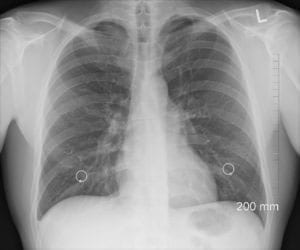Nontuberculous Mycobacteria (NTM) Lung Disease
What is nontuberculous mycobacteria (NTM) lung disease?
Nontuberculous mycobacterial (NTM) lung disease is an infectious disease caused by certain types of mycobacteria. Mycobacteria are a type of harmful germ that are found naturally in soil and water. In this disease, they cause a chronic lung infection. Most people exposed to these bacteria don’t get sick, but people with weakened immune systems and/or other health conditions have a higher risk of developing NTM lung disease. It most commonly affects people who already have an underlying lung disease. NTM lung disease can affect any age group, but it affects older adults much more. In North America, the number of people getting this disease is rising, especially in the elderly.What are the symptoms of NTM lung disease?
Some people who have this condition don’t show any symptoms. For those who do, the severity of symptoms can vary a lot. They include:- Severe, persistent cough
- Coughing up blood
- Shortness of breath
- Excessive production of mucus
- Fever
- Tiredness
- Night sweats
- Weight loss
- Recurring respiratory infections (less commonly, infections in the lymph nodes, skin, and bones)
What causes NTM lung disease?
Most current evidence indicates that infections aren’t transmitted from person to person, but are acquired from the environment. When the mycobacteria enter the lungs, they can infect the airways and tissue, which leads to inflammation and disease. There are quite a few identified risk factors for NTM lung disease. These include: weakened immune system, cystic fibrosis, previous tuberculosis, chronic obstructive pulmonary disease (COPD), bronchiectasis, pneumoconiosis, and alpha-1-antitrypsin diseaseHow is NTM lung disease diagnosed?
NTM lung disease is diagnosed using the following procedures:- Recording of patient history
- Thorough physical evaluation
- Identifying characteristic symptoms
- X-rays
- CT scans
- Sputum (mucus) culture
- Other tests to rule out other similar diseases (like tuberculosis and lung cancer)
What are the treatments for NTM lung disease?
Treatment plans for this disease depend on the severity of the disease and the patient’s preferences. For those whose infections aren’t strong, treatment may not be needed at all. For those that do need it, options include:- Continuous antibiotic regimens (until tests come back negative for at least 12 months)
- Close monitoring to track infection’s progress
- Treatment of the underlying lung disease accompanying NTM lung disease
- Surgery if lung tissue is damaged
Where can I find out more about NTM lung disease?
Nontuberculous Mycobacteria (NTM) Lung Disease Articles

NUZYRA for NTM Lung Disease from MAC Earns Fast Track Designation
Jessica Lynn
July 14, 2022
Read More »

Epetraborole Granted Orphan Drug Designation for NTM Lung Disease
Jessica Lynn
February 17, 2022
Read More »

First Patient Enrolled in NUZYRA Trial for NTM Lung Disease
Jessica Lynn
November 16, 2021
Read More »


CF Foundation Awards Over $2 Million for Cystic Fibrosis Treatment Development
Kendall Mason
February 26, 2021
Read More »


Can AI and Machine Learning Help Rare Patients Get Diagnosed and Treated Faster?
James Moore
October 8, 2020
Read More »

NTM Info & Research Creates Educational Tool for Patients with Bronchiectasis
Jessica Lynn
April 20, 2020
Read More »



